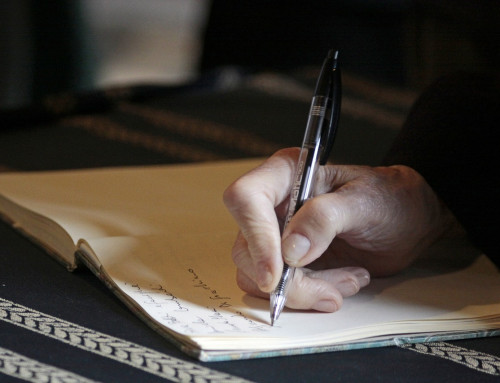A holographic will is a document in which a person leaves a written record of how they want their assets to be distributed after their death. The particularity of this type of will is that it is written by the testator himself, who makes the will in your own handwriting, without the need for it to be written by a notary or witnesses.
The holographic will in Spain
In Spain, the holographic will is one that is written in handwriting by the testator, without the need for it to be drawn up by a notary or witness. In order for it to be legally valid, it must meet certain requirements established in the Civil Code.
Among the requirements for a holographic will to be valid in Spain are the following:
- It must be written entirely by the testator, without the intervention of third parties.
- It must also be dated, indicating the place and date it was written.
- In addition, it must be signed by the testator at the end of the document.
- Finally, it must contain the express declaration of the testator that it is his will.
If deletions or amendments have been made, these must be saved by the testator with his signature.
The holographic will does not need to be drawn up by a notary. Although it is recommended that the testator go to a lawyer or notary for advice and avoid errors or possible challenges. In addition, it is important that the holographic will be kept in a safe and accessible place to prevent it from being lost or damaged.
The holographic will in Catalonia
In Catalonia, the holographic will is one of the ways in which a person can record in writing how they want their assets to be distributed after their death. This type of will is regulated by the Civil Code of Catalonia and presents some peculiarities compared to other holographic wills in other regions of Spain.
Among the particularities of the holographic will in Catalonia, there are the following aspects:
- It must be written in Catalan, which is the official language of the region.
- The testator must be at least 18 years of age and of sound mind.
- The will must be written in the testator's own handwriting, dated and signed at the end of the document.
- It is recommended that the holographic will contain an express statement by the testator in which he states that it is his will and that he annuls any other previous will that he has made.
- The holographic will must be kept in a safe and accessible place, and in the event of death, it must be presented before a notary for validation.
We must also comment that, although the holographic will is a valid way of making a will in Catalonia, there are also other modalities. For example, the notarial will or the will in the form of a public act, which may be more appropriate depending on the personal circumstances of each testator.
The holographic testament of Alessandro Lequio
Ana Obregón has become one of the latest celebrities to grab headlines for her holographic will. In the case of the popular actress, the drafting of her will would have been due to her desire to fulfill the last will of her son, Aless Lequio, who died last year from cancer.
We have already explained above what exactly is a holographic will and its legal validity. According to experts in the field, the holographic will is one of the ways of making a will that is regulated by the Civil Code and that may be suitable for those who prefer to do it in a more intimate and personal way, without the presence of third parties.
In any case, experts recommend that, despite the fact that the holographic will does not require the presence of a notary or witness, a specialized lawyer should be consulted for advice and to avoid errors or possible challenges.
The case of Ana Obregón, who has shown her holographic will on social networks, not only has an impact on the online reputation of Ana Obregón. It has also highlighted the importance of fulfilling the last will of a loved one and the need to have an adequate and well-written will to avoid possible conflicts between the heirs.
Requirements
This type of testament has certain peculiarities, since it is written by the testator himself, without the intervention of a notary or witnesses.
For a holographic will to have legal validity, it must meet certain requirements, which vary according to the legislation of each country. Next, we will look at some of the most common requirements:
- It must be written entirely in the testator's handwriting, without the intervention of third parties.
- In addition, it must be dated and signed at the end of the document.
- It is recommended that the will contain an express declaration of the testator. In it, he must state that it is his will and that he annul any other previous will that he has made.
- Finally, you must comply with the formalities required by the law of the country in which the will is made.
Procedures for its presentation
Once the testator dies, the holographic will must be presented before a notary within a period of 10 days after knowing his death. If it is not carried out within this period, the person will be responsible for the damages that it produces and face the payment of compensation. After the presentation, a series of procedures begins:
- Verification of authenticity by the notary.
- Presentation of witnesses to certify its authenticity, although calligraphic expert evidence can also be presented.
- Issuance of minutes by the notary for the formalization of the document in the notarial records. If the analysis is not positive, the document is rejected.
Good management is essential, because this type of will loses validity five years after death. As long as it has not been validated and opened.
Finally, it should be noted that due to its nature, the holographic will presents some risks and limitations in certain countries. Even being subject to legal challenges if they do not meet the established requirements or if there is any doubt about the mental capacity of the testator at the time of its drafting. For this reason, we once again emphasize the importance of drafting them in the presence of a lawyer or notary to avoid future problems.
TestHolographer FAQ
Article 1551 establishes the necessary requirements for a holographic will to be valid: It must be executed by persons of legal age. It must be completely written by the testator. It must be signed by the testator, including the date of granting.
After death, it must be presented to a notary for validation.
Simply use a computer or a pen to make your last wishes clear. Of course, once the death of the testator occurs, it is necessary to formalize the document before a notary. The heirs will have to invest between 40 and 80 euros for this.
Although it is legal, it may be less secure due to risks of loss or challenge.
For a holographic will to be valid, it is required that it be written in its entirety by the testator, using his or her own handwriting and without the use of mechanical means. In addition, it must be signed by the testator and must include the date of its granting.
Developed with the AB Dictionary plugin for WordPress





Leave a Comment